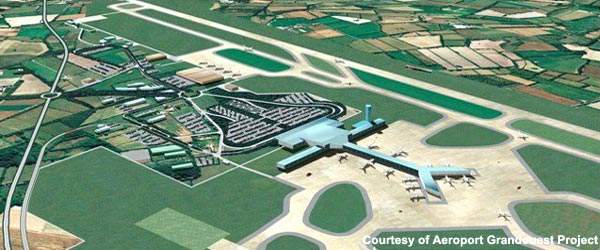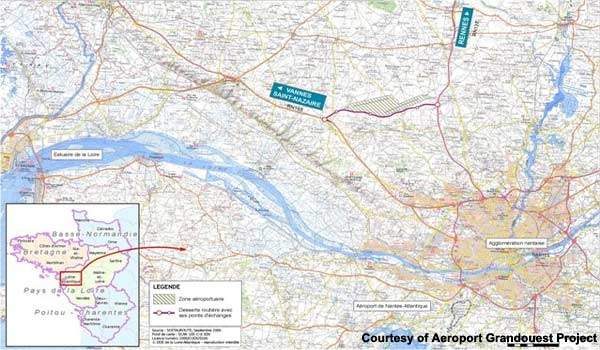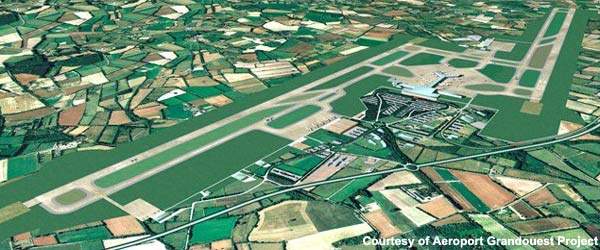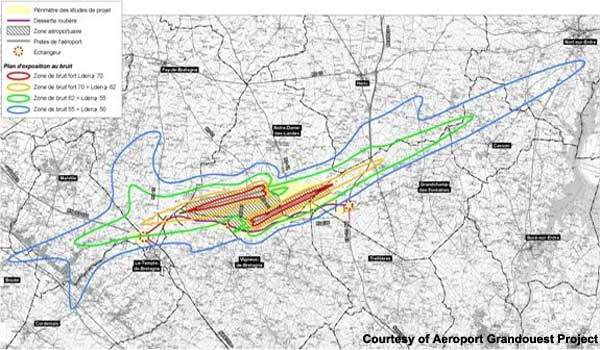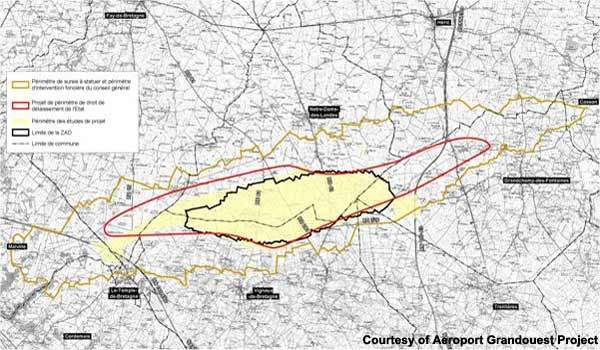In February 2008 approval was finally given for the construction of a new airport near Nantes in Brittany by the French ministry for ecology and sustainable development and the Conseil d’Etat (the public utility decree was signed on 10 February 2008). The new airport has been under discussion for the last 30 years and is expected to become reality by 2015 (construction is scheduled to begin in 2012).
The new two-runway Notre-Dame-des-Landes Airport, which is also known as the New Nantes Atlantique Airport and the Aéroport du Grand Ouest (greater west) will be situated 30km northwest of the City of Nantes, Loire-Atlantic, which is 90km south of Rennes and will have the effect of alleviating low-level flying over the city thus reducing noise pollution.
The airport will require an investment of €580m (costs were estimated at €480m in 2002) and will be designed to handle up to nine million passengers a year. Phase one of the new airport construction will see a capacity of four million passengers a year and the nine million capacity will be phased in after additional phased construction up to 2050. The current Nantes-Atlantique airport can only handle three million passengers a year and cannot be expanded because it is too close to the city (only 8km from the city centre).
There has a been a large increase in the growth of air traffic in western France of over 5% a year and airport capacity in the region is poor; aside from the old Nantes Atlantique airport there are four other major airports in the immediate catchment area (Rennes, Angers, St-Nazaire and Vannes) but none of these are suitable for an expansion on the scale that is required.
HISTORY OF THE PROJECT
The airport project at Notre Dame des Landes was first launched as a concept in the mid-1960s but very little progress was made. Over 30 years later in the late 1990s when it was forecasted that passenger traffic at the existing Nantes-Atlantique (operated by the Chambre de commerce et d’industrie de Nantes who are expected to bid for the new airport concession) would soon reach full capacity, it was decided to build a new replacement airport.
The new airport is expected to stimulate the economy of the eastern region of Brittany bringing new jobs and investment to Rennes and Nantes. There have been worries that the new airport will have a detrimental effect on Rennes Saint-Jacques Airport, which is the second-largest airport in the region next to the current Nantes-Atlantique.
INTERMODAL TRANSPORT
One of the advantages of starting with a greenfield site is that the transport to the airport can be integrated into the design of the whole facility at the start. This is the case for the new Nantes Atlantique (Aeroport Grand Ouest) as the airport will be situated in the midst of the major cities of the region (Lorient is 150km away and Brest is only 280km away) and will be linked into the motorway network and will also have its own railway station on the high speed rail network (the station will be integrated into the design of the new terminal building).
One other advantage will likely be that the airport will be linked by flights directly to major European capitals thus cutting journey times for travellers since they will no longer have to fly to Paris and change to international flights there.
The terminal building has been designed by ADPI (a subsidiary of Aéroports de Paris) and has a combined arrivals departure area with a long concourse off the middle (resembling a T-shape); the concourse then splits into two at the end to give more gate capacity (there will also be a separate cargo terminal).
The concession to construct and operate the new airport will enter the bidding phase in 2009 (the concession will include the operation of the old Nantes Airport from 2009 until it closes and the new airport construction and operation).

